
LAVA 1.0 Content
-
Posts
2,739 -
Joined
-
Last visited
-
Days Won
1
Content Type
Profiles
Forums
Downloads
Gallery
Posts posted by LAVA 1.0 Content
-
-
It depends on what you actually want (your question is ambigious):
- A .ctl file based on an existing control?
Use the Variant to Control code from the Code Repository - A control based on an exisinting cluster?
I think you can do that, I only don't know how.
Ton
- A .ctl file based on an existing control?
-
QUOTE (Kevin P @ May 3 2007, 07:31 PM)
QUOTE (ritesh024 @ Apr 3 2009, 02:04 PM)
Why can't i see Write TDMS Cluster_TDMS.vi in my OpenG package ??I updated OpenG package around a month back.is it a recent launch ??RiteshThe VIs are not part of the OpenG package, Kevin has uploaded them to this thread, here.
Ton
-
You should:
A: Autostart the VI
B: Hide the toolbar as well
C: Close the Front Panel after the code has finished
Ton
-
-
Here's a tough one:
Disconnect a Typedef with a Registration Refnum.
The Registration Refnum contains a User Event with a TD-control.
I cannot get LabVIEW to disconnect from the TD inside the user event, only by removing the TD.
Ton
-
QUOTE (Ton @ Mar 28 2009, 01:10 PM)
I took another look and the actual size is A6
QUOTE (menghuihantang @ Mar 30 2009, 03:44 AM)
What about resolution? Can you wire into inputs/outputs easy?You need the auto-tool, but I have no issues, might be a little bit slower than the mouse, but the comfort of knowing I limited my daily mouse hours to 10 (at the most) is worth it.
I use it on a 1280*800 widescreen laptop no problemo.
Ton
-
I have a small Wacom (A5 format I think) at home for all my computing. I love it. It is too small for two screens but for one with absolute positioning it works good. LabVIEW is no problem, the only thing I miss is the scroll wheel, but other models have that included.
Ton
-
QUOTE (Aristos Queue @ Mar 25 2009, 01:13 AM)
QUOTE (Ton @ Mar 25 2009, 11:36 AM)
Strange, I would expect that these loaded when a project is openend.QUOTE (Aristos Queue @ Mar 25 2009, 02:16 PM)
Why? There are various uses of the project, most notably building an app, that does not involve opening a VI (note I distinguish loading a VI vs opening a VI, since AppBuilder obviously must load VIs). The project loads the pieces it needs as it needs them.Well all these nice overlay icons for SCC'd items are the reason why I would expect that SCC VIs load direcly upon opening a project.
Ton
-
QUOTE (Aristos Queue @ Mar 25 2009, 01:13 AM)
My bet: Source code control and/or installed LV modules.The first time you open a VI in a project, if you have SCC enabled, all the SCC VIs that manage that connection load into memory and then stay there.
Strange, I would expect that these loaded when a project is openend.
Ton
-
-
I'm trying to find out if a given library is part of another libary. I don't get anything sane to work.
For a VI there is a 'Library' property that returns the owning library reference. For a library such feature does not exist.
Even stranger is that the 'Localized Name' or 'Display Name' only contain the bare name of the library.
I currently have one workaround:
And this solution needs any VI to be inside the lvlib root-folder.
Ton
PS this code needs to be done in 8.2 so any ideas?
Edit:
Darren Twittered
QUOTE
@tonplomp If you have the library's ProjectItem, you can get Parent in a loop until you hit a target or a library.So I builded the following project setup:
The 'Untitled 4.vi' has the following contents:
Note that the Parent's ref of the folder is not valid! Somehow the folder inside the top-level library has no valid parent

Ton
-
QUOTE (crelf @ Mar 19 2009, 07:03 PM)
Then, join the Future of LabVIEW programming.
QUOTE (PaulG. @ Mar 19 2009, 08:22 PM)
I'm volunteering you to join the open source space shuttle control software development team. And you get a seat on the first flight. Kick the tires and light the fires! :thumbup:Ditto, some things are just too important to leave to willing enthousiasts.
Ton
-
I have no experience with DMMs, but do you use Daqmx functions to read them out?
If so you can use the DAQmx triggering function.
One task could start at the same time the other start. Daqmx will set up the backplane lines as needed.
Ton
-
-
QUOTE (ASTDan @ Mar 18 2009, 09:08 PM)
My main complaint/misunderstanding is if I organize all my files properly on disk why do I need the project? What value does the project give me if I orgainize all my code and suporting documentation on disk?Another plus:
Conditional Diagram Disable
Most likely you currently work with a 'tree.vi' to encapsulate all your code and prevent cross-linking issues, if you are customized to this routine, stepping over to the project should be quite easy.
One other plus that a colleague intoduced:
A projects project.
The sole purpose of this project is to keep all the (current) projects in one spot. It only contains other projects, and is an easy access to them.
One other point, the project allows you to have multiples projects open at the same time without any collision between them, you can move a VI from one project to another with a single mouse click.
Dan, my advice, go with it.
Let it bug you for a week, than never look back.
Ton
-
There are some primitives in LabVIEW that deal with polar data-type conversion. Search the palettes.
Ton
-
QUOTE (Aristos Queue @ Jun 25 2008, 02:36 AM)
-
... Note that there are enough pad bytes after the PStr to get the length of the string to be a multiple of four.
-
After each cluster there are enough pad bytes to get the length of the string back to a multiple of four.
Forgive my ignorance, but why should this be padded data?
How does this go for LabVIEW 64 bit? is the padding than 8 bytes?
Ton
-
Okay I understand, however the BD you showed will run on the Executable and not in the IDE.
So you need the 'scripting' part to be executed in the IDE.
Put those parts in a seperate VI, load those into the IDE and let that VI run the 'Get GObjects' function on the VI you want to diagnose.
Ton
-
I think that scripting nodes are removed from the RTE.
PS you don't need the 'Open Application' code for 'This Application', just the default App as found on the palette.
Ton
-
QUOTE (Mark Yedinak @ Mar 13 2009, 09:43 PM)
Here is a little bit code that demonstrates what Mark is describing:
QUOTE (Oliver Barrett @ Mar 14 2009, 05:55 AM)
I thought of using the phantom cluster approach, but I expect that the cluster border (even if transparent) would have to be expanded to cover a large area of the front panel where my indicators are placed. Since I actually have three groups of indicators that cover different functional purposes, their cluster boundaries would have to overlap, don't know whether that would be an issue.That might introduce a speed issue, controls overlapping each will all be redrawn if one of them needs to be redrawn, I don't know how far this goes for clusters but I would discourage them.
Ton
-
-
QUOTE (jdunham @ Mar 6 2009, 04:57 PM)
So the underlying issue is that, for the control I'm really working on, any number of things can happen, and I just want to repaint the whole display whenever the data changes or the state changes or any of the auxiliary facade controls change. Where is the best place to put that code such that it's easy to invoke it from various points on the facade block diagram?What I normally do is add a field to the XControl's state as a commander.
In the timeout event of the XControl I read the command state and redraw if necessary.
This can even be done from an XControl property or method.
Ton
-
-

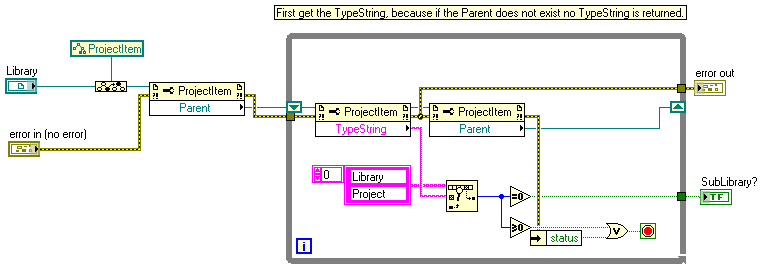
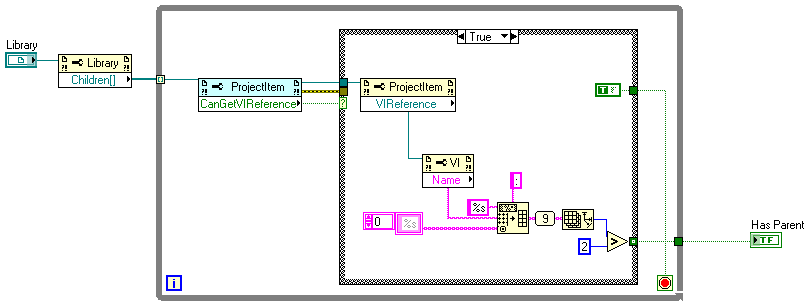
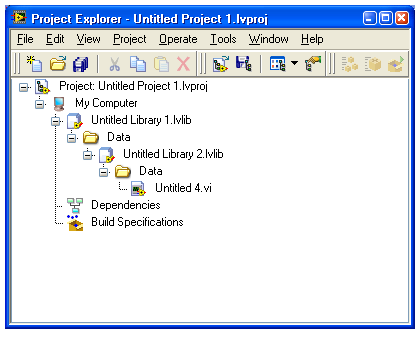
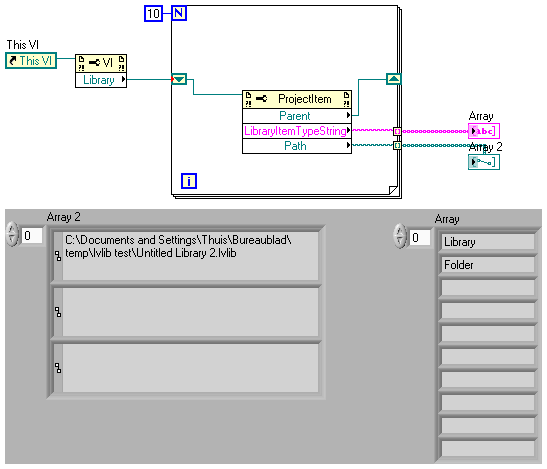

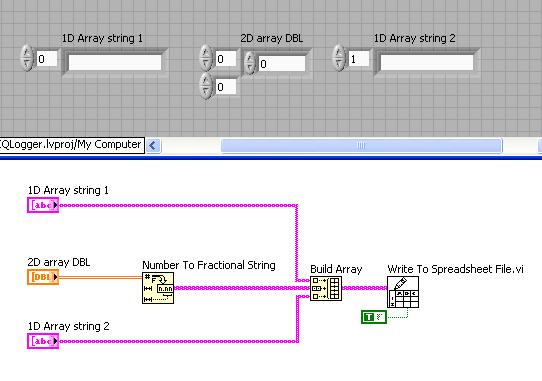
Tank indicator is missing
in LabVIEW Bugs
Posted
QUOTE (flarn2006 @ Apr 5 2009, 09:11 PM)
It's sounds to be a feature for 8.6 only. All my visible categories are selected and the Tank is missing.